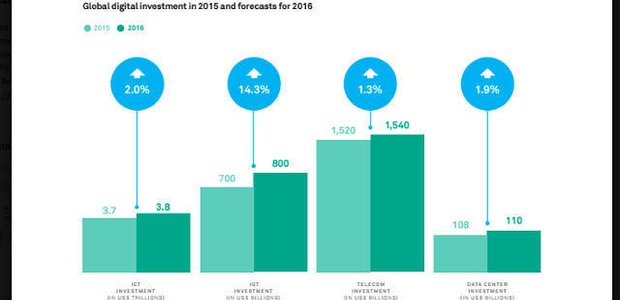advertisement
Increases in national digital transformation show correlation with productivity, competitiveness, and innovation improvements
Global improvements have been seen in overall levels of national and economic digitization, according to the just released Huawei 2016…

Global improvements have been seen in overall levels of national and economic digitization, according to the just released Huawei 2016 Global Connectivity Index (GCI). In its third year, the report measures the progress of 50 nations in investing in and deploying Information and Communications Technology (ICT) to achieve economic digitization.
The greatest improvements across the globe have been seen in broadband coverage and speed, but nations are also making headway with cloud, big data, and Internet of Things (IoT) technologies.
GCI 2016, Connect where it counts, measures how nations are progressing with digital transformation based on 40 indicators that cover the supply, demand, experience, and potential of five technology enablers: broadband, data centers, cloud, big data, and IoT. Investing in these five technologies enables nations to digitize their economies.
advertisement
Average national connectivity levels are 5 percent higher than they were in 2015. Twelve countries improved their positions, while four experienced a drop. The top three developed economies are the United States, Singapore, and Sweden. The leading developing economies are the United Arab Emirates in 19th place, Qatar in 21st, and China in 23rd.
Examples of countries that moved up the index include the UK in 5th, up one place from last year; Malaysia, which jumped four places to 25th; and Indonesia, which moved up two places to 41st. Malaysia and Indonesia’s gains are attributable to broadband rollout, which in turn influences data center development. These two basic technologies lay the foundation for the three advanced technology enablers: cloud, big data, and IoT.
GCI scores continue to show a positive correlation with GDP, similar to last year’s findings. However, the extent to which GCI influences GDP varies with the stage of digital transformation in each country.
advertisement
GCI 2016 identifies three groups of nations: Starters are beginning their digital journey and score between 20 and 34. At the moment, their digital infrastructure is not developed enough to strongly influence GDP. Adopters in the middle range have a stronger digital infrastructure and score between 35 and 55. They experience the greatest GDP gains per GCI point increase. Frontrunners show the greatest digital development with scores above 55, although GDP gains per GCI point are slightly less than Adopters. However, Frontrunners show more mature cloud, big data, and IoT in readiness for more extensive economic digitization.
GCI 2016 finds that investing in digital infrastructure correlates to GDP gains because it increases economic dynamism, efficiency, and productivity. To drive further GDP gains, countries need to move up the technology stack by investing in new technologies and ensuring they are adopted by governments, industry, and people.
According to the report, nations with high GCI scores are also more competitive and innovative, with a close correlation found between GCI scores and ratings in the WEF Global Competitiveness Index and the Global Innovation Index, jointly published by Cornell University, INSEAD, and the UN’s World Intellectual Property Organization.
advertisement
“A revolutionary shift is occurring in the way the world works, with economies across the planet going digital fast. Nations that are in the early stages of economic digitization should develop long-term technology plans that include broadband and data centers to reap the benefits of enhanced growth,” said Kevin Zhang, President of Huawei Corporate Marketing. “Developed economies wanting to capitalize on their frontrunner ICT status should invest more in cloud, big data, and IoT technologies and solutions to experience the full benefits of a digital economy.”
The 50 countries assessed by GCI 2016 account for 90 percent of global GDP and 78 percent of the world’s population.